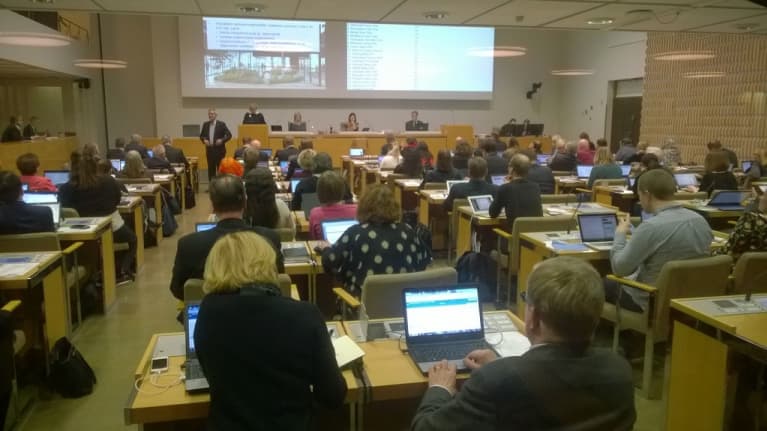Helsinki city council members debated the proposal to give financial backing to a Guggenheim art museum Wednesday evening for almost six hours. Many opened their remarks by saying that they did not oppose culture and the arts, but they still could not back this specific project. Some gave further evidence of a love of the arts by listing the art museums they have visited.
In a surprise move, National Coalition Party City Councilor Lasse Männistö introduced a counter-proposal aimed at approving construction of a Guggenheim museum in the capital, but with a different financing plan.
His proposal eliminated any city guarantees for project loans, a requirement for 50% private funding and a revision of the winning architectural design.
Männistö's proposal was also rejected by a council vote.
Reasons why
In an analysis Thursday of the decision by the city council, Satu Nurmio who heads Yle's culture and arts reporting says that the Helsinki Guggenheim project was a high-risk venture not convincing enough to justify investment it would have required.
In her view, the low level of funding pledged by the private sector was an indication that donors did not see it as a viable investment.
Another contributing factor to opposition to the project was the lack of positive public feeling. For a start, notes Nurmio, the Helsinki Guggenheim Foundation failed in its bid to use an architectural competition to create a building that the public would fall in love with. The winning entry even aroused a degree of opposition to the museum project.
Yet another stumbling block was an operational style in planning by the Solomon R. Guggenheim Foundation that lacked transparency, Nurmio points out. Many city council members were surprised by the latest proposal. In the end, attempts to airbrush the venture worked against it.
The last proposal tabled boasted new financiers - but it later emerged that the additional funding came from loans and were not grants.
Skeptics asked what the foundation was getting out of it, why it was necessary to again push the museum upon the city even though the project had previously been unsuccessful.
Skepticism boosted opposition. Estimates by the Helsinki Guggenheim Foundation of an increase in tourism and the numbers of paying museum visitors were not considered realistic.
